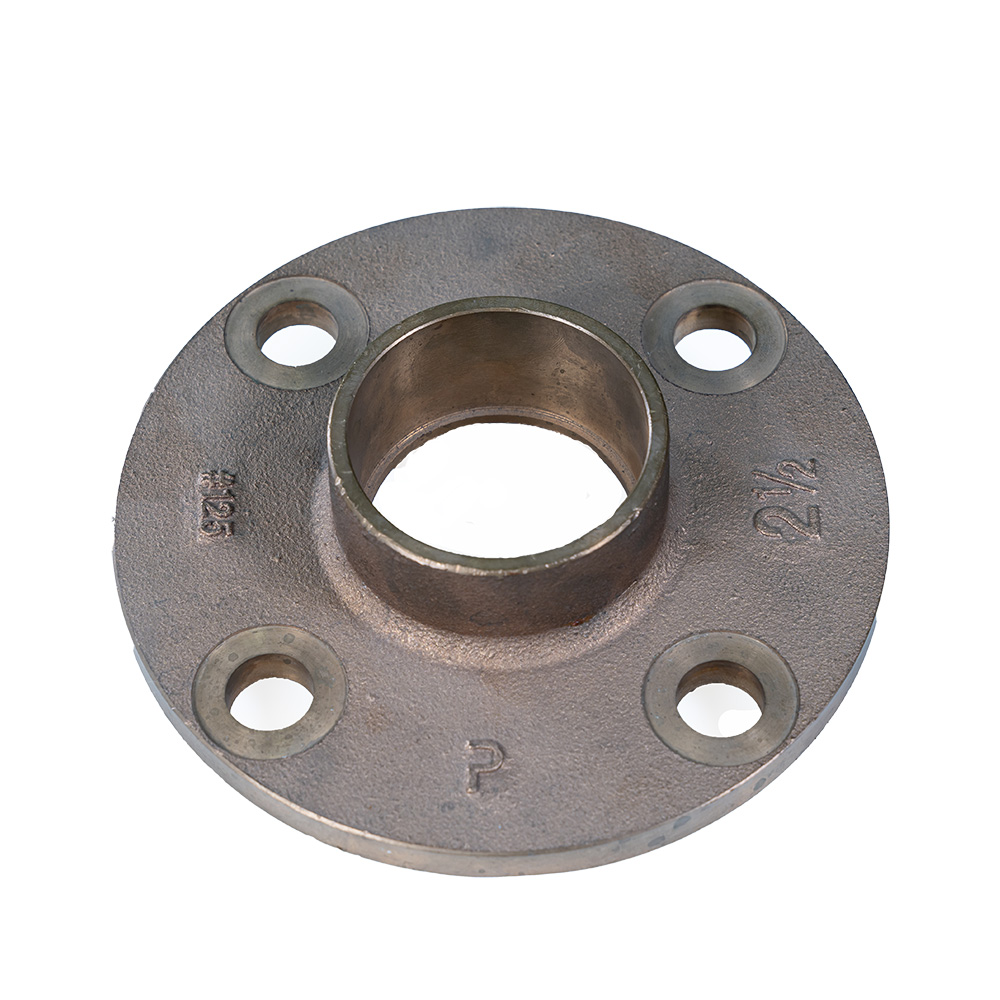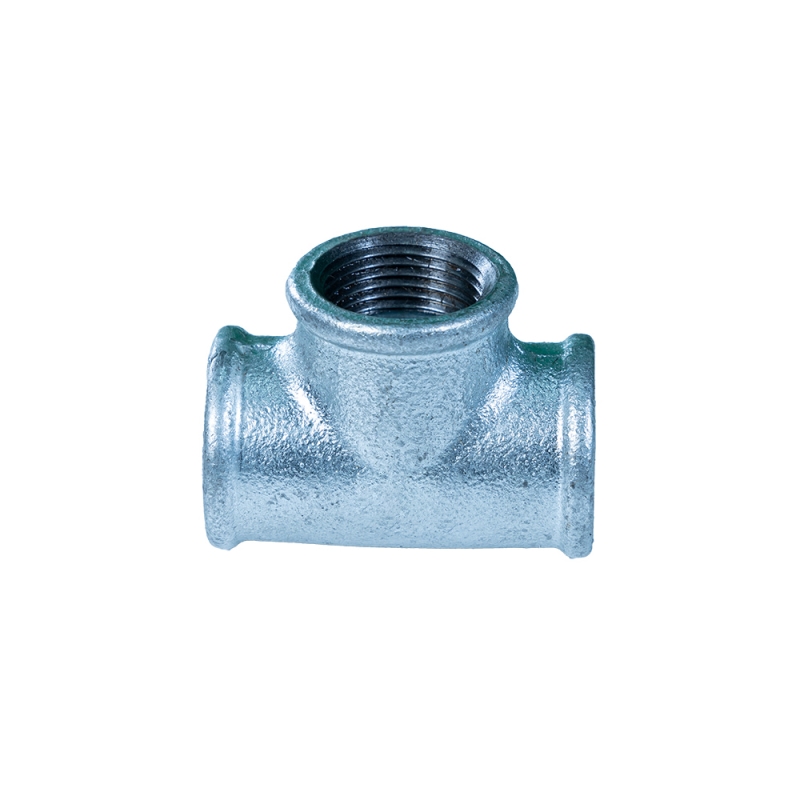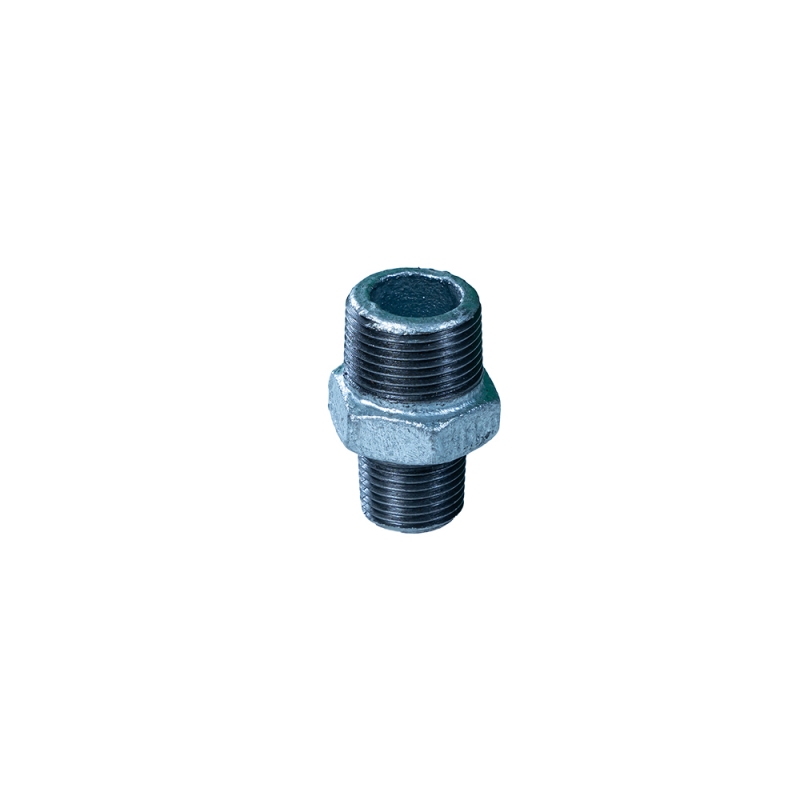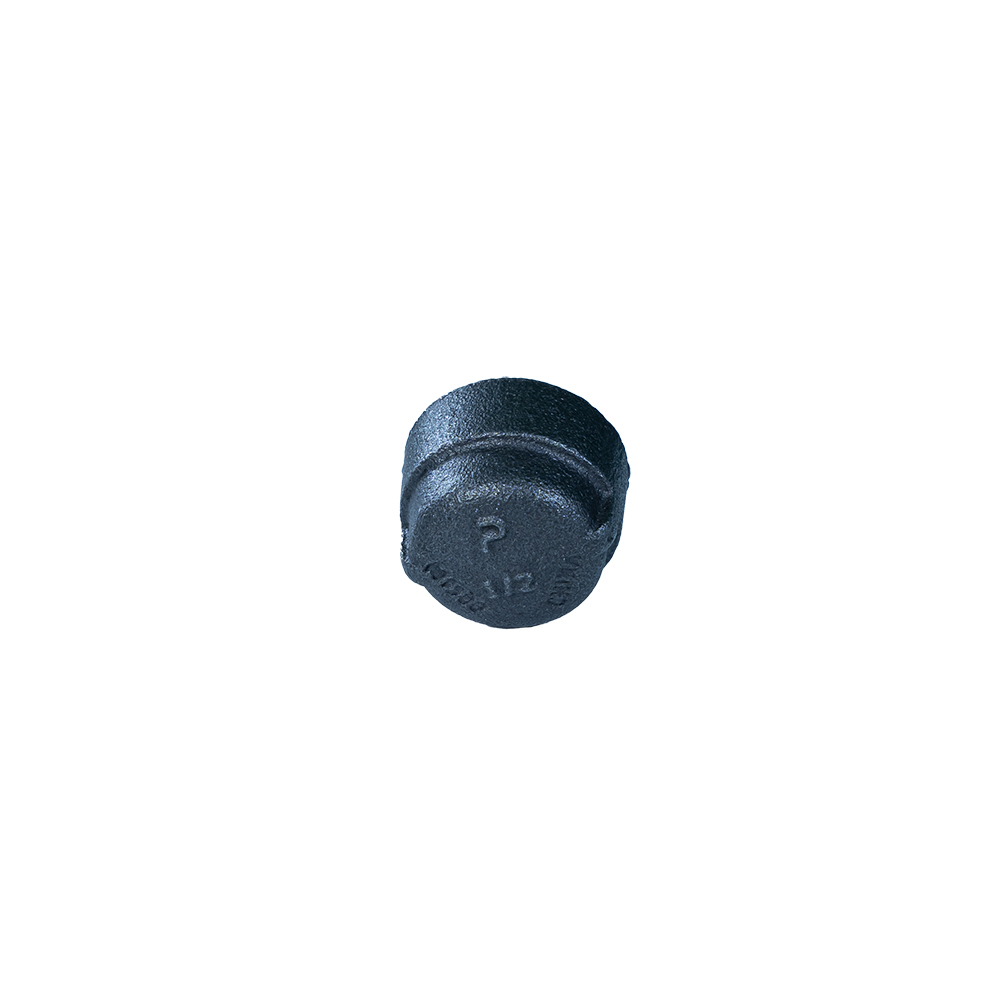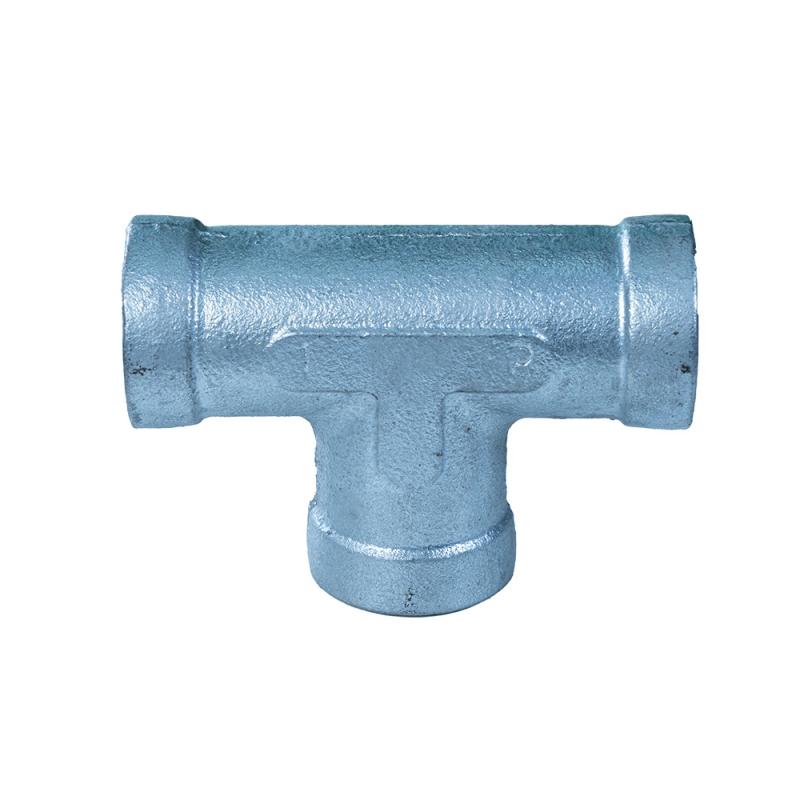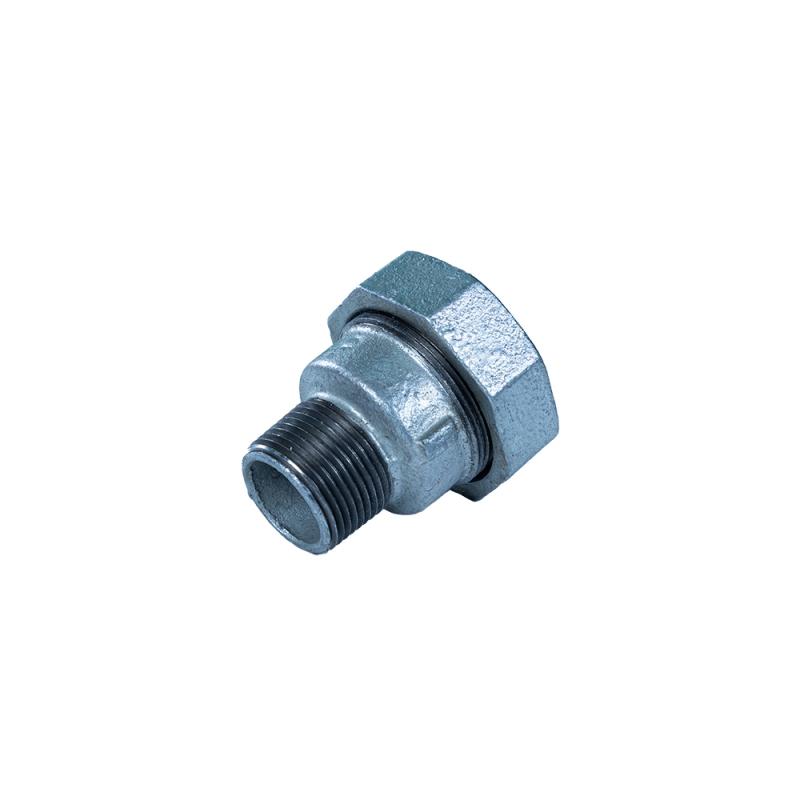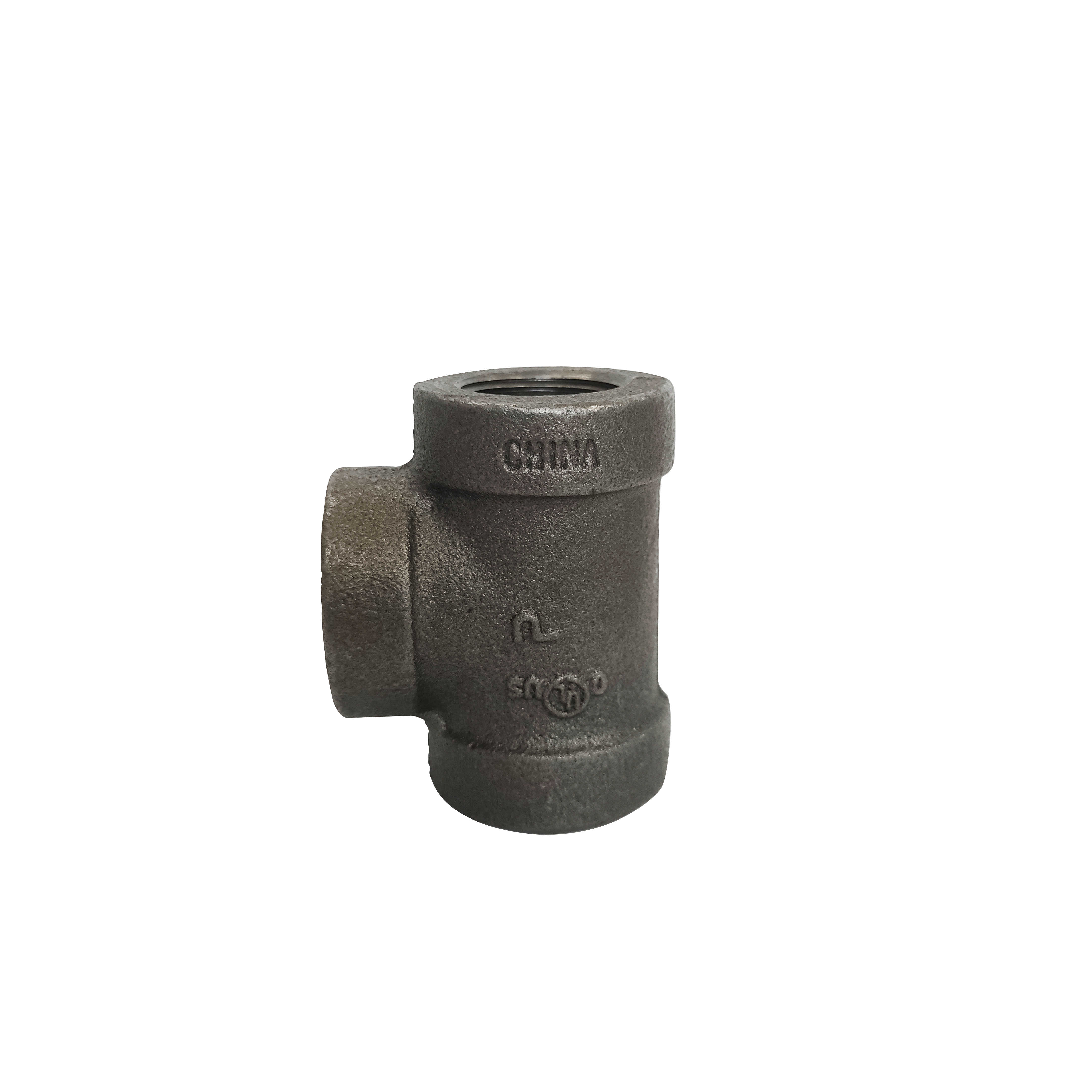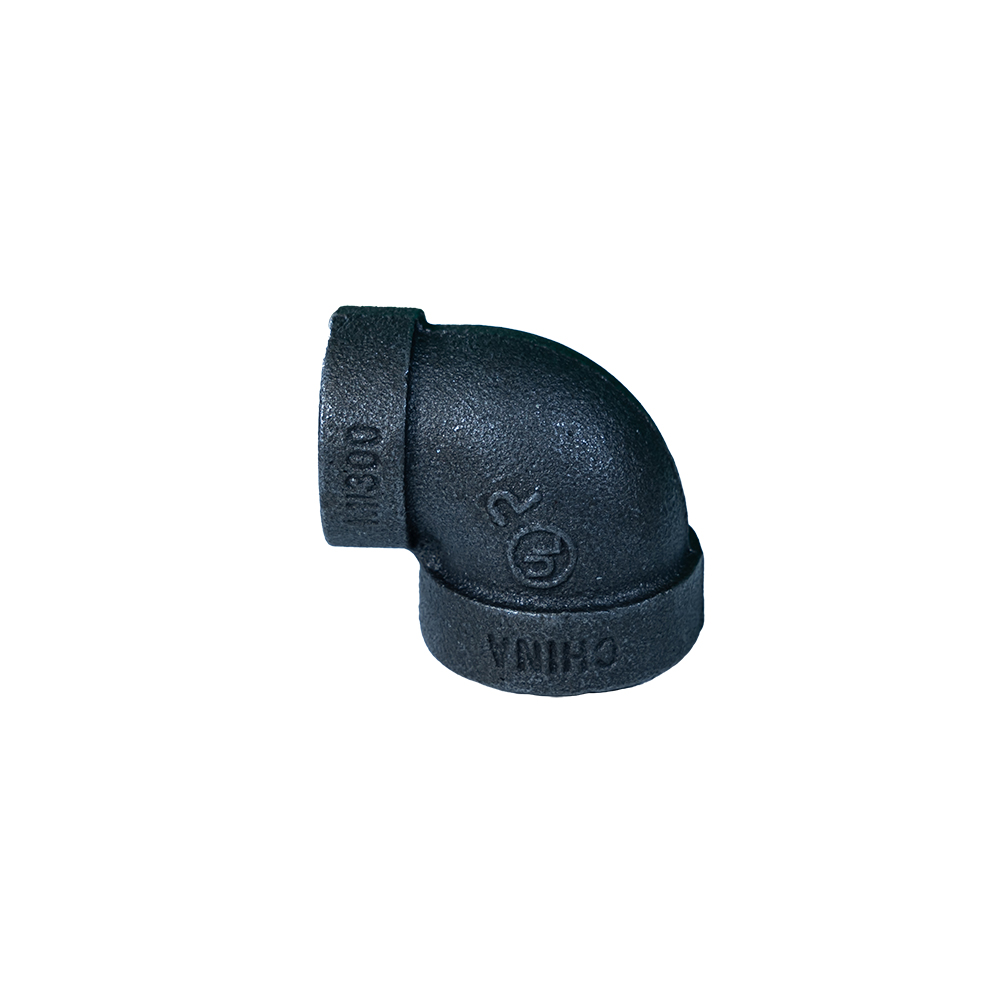The Indispensable Role of Galvanized Unions in Modern Industrial Systems
In the intricate network of industrial piping systems, the integrity and longevity of connections are paramount. While various fittings serve distinct purposes, the 1 1/2 galvanized union stands out as a critical component, offering unparalleled reliability and ease of maintenance. This specific fitting is engineered to provide a secure, leak-proof, and easily disconnectable joint in pipelines, making it an essential asset across a myriad of sectors. Its robust construction and protective zinc coating extend its operational life significantly, especially in corrosive environments. Unlike permanent welding solutions, unions facilitate swift assembly and disassembly for routine maintenance, system modifications, or component replacement, thereby minimizing downtime and operational costs. The demand for high-performance galvanized unions is consistently driven by global infrastructure development, advancements in industrial processes, and an increasing focus on sustainable and resilient piping solutions, pushing manufacturers to innovate and adhere to stringent quality benchmarks. This detailed exploration delves into the technical intricacies, manufacturing excellence, diverse applications, and strategic advantages that position galvanized unions, particularly the 1 1/2 galvanized union, as cornerstones of efficient and enduring fluid conveyance systems.
Precision Manufacturing: From Raw Material to Robust 1 1/2 Galvanized Union
The manufacturing of a high-quality 1 1/2 galvanized union is a multi-stage process that combines metallurgical expertise with advanced engineering techniques. The journey begins with the selection of premium raw materials, typically high-grade malleable iron or ductile iron, chosen for their superior strength, ductility, and machinability. This foundational material is crucial for the subsequent casting process, where molten iron is precisely poured into meticulously designed molds, often employing sand casting or shell molding techniques to achieve the desired union body, nut, and tailpiece configurations. After solidification and cooling, the raw castings undergo rigorous deflashing and cleaning, preparing them for the next critical phase: machining. State-of-the-art CNC (Computer Numerical Control) machines are employed to achieve precise threading, often conforming to NPT (National Pipe Taper) or BSP (British Standard Pipe) standards, ensuring perfect interoperability with existing piping infrastructure. The seating surfaces are also machined to exacting tolerances to guarantee a leak-proof metal-to-metal seal or to accommodate a gasket for enhanced sealing. Following machining, the components undergo a thorough hot-dip galvanization process, where they are immersed in a bath of molten zinc at approximately 450°C (842°F). This process creates a metallurgically bonded zinc coating that acts as a sacrificial barrier, providing exceptional corrosion resistance far beyond that of bare iron. Each batch of galvanized fittings is then subjected to stringent quality control, including visual inspection, dimensional checks, thread gauging, and pressure testing, often in compliance with international standards such as ISO 9001, ASTM A197 for malleable iron castings, and ANSI B1.20.1 for pipe threads. This meticulous process ensures that every 1 1/2 galvanized union exhibits a prolonged service life, typically exceeding 20-30 years under normal operating conditions, making them ideal for demanding applications in petrochemical, oil and gas, municipal water supply, fire protection, and industrial fluid conveyance systems where prevention of corrosion and easy maintenance are paramount.
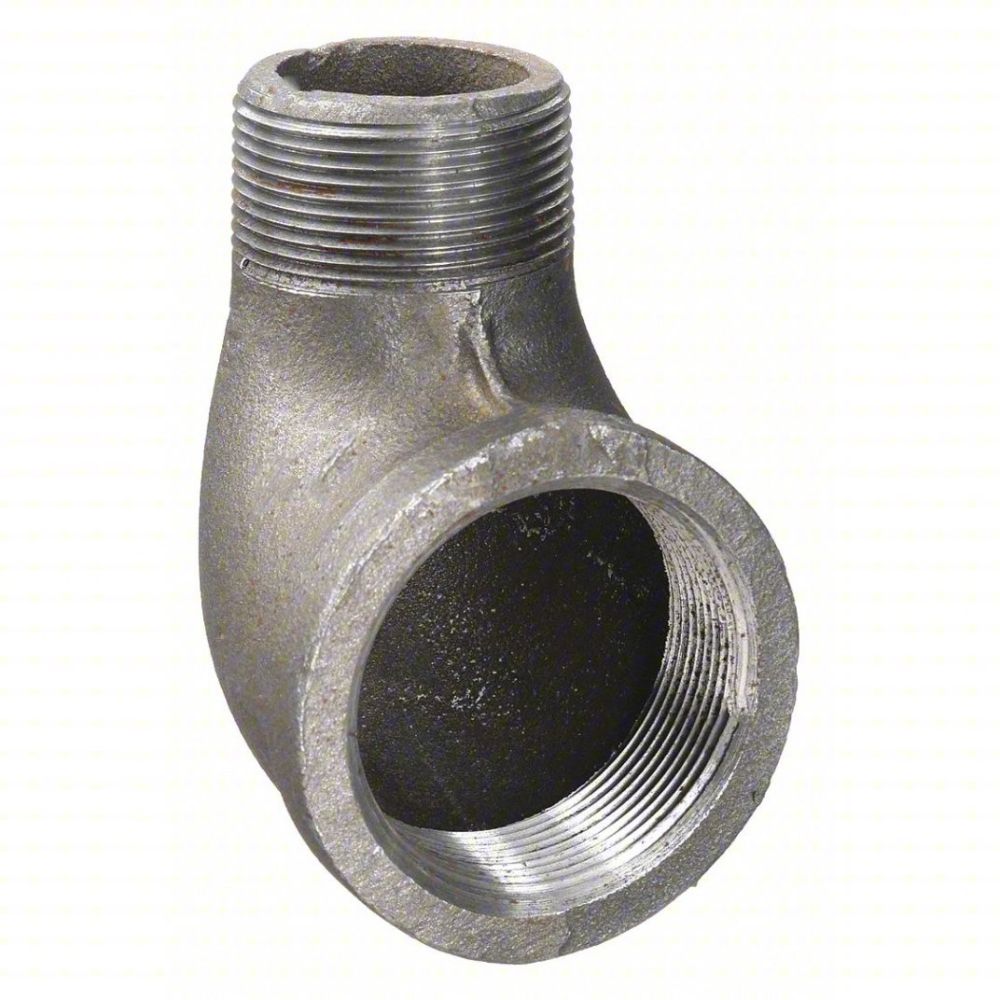
Key Technical Parameters for 1 1/2 Galvanized Unions
| Parameter | Description/Value |
|---|---|
| Nominal Size | 1 1/2 inches (DN40) |
| Material | Malleable Iron (ASTM A197/EN 1562) |
| Coating | Hot-Dip Galvanized (ASTM A153/EN 10240) |
| Thread Standard | NPT (ASME B1.20.1), BSPT (ISO 7/1), BSPP (ISO 228) |
| Working Pressure (Max) | 1.6 MPa (232 PSI) for water/oil/gas |
| Test Pressure | 2.4 MPa (348 PSI) hydraulic test |
| Temperature Range | -20°C to +120°C (-4°F to +248°F) |
| Corrosion Resistance | Excellent due to zinc coating (sacrificial protection) |
| Typical Sealing Method | Metal-to-metal conical seat or NBR/PTFE gasket |
| Applicable Media | Water, Oil, Gas, Steam, Air (non-corrosive fluids) |
Industry Trends and Expansive Application Scenarios
The industrial landscape is continuously evolving, driven by demands for greater efficiency, sustainability, and resilience. This translates into a growing need for advanced piping components that can withstand increasingly harsh operating conditions while offering superior performance and reduced environmental impact. The trend towards modular construction and prefabricated piping spools further elevates the importance of fittings that allow for quick, reliable assembly and disassembly, such as the 1 1/2 galvanized union. Beyond this core size, related components like the 1 1/4 black iron coupling, often used for joining standard black iron pipes, and the 1 1/4 black iron union, providing disconnect capability for non-galvanized systems, continue to play their roles, though they may lack the corrosion resistance of galvanized alternatives. Similarly, the 1 1/4 galvanized union and 1 galvanized union address needs for smaller diameter pipes, ensuring consistent performance across different system scales. In terms of application, galvanized unions are ubiquitous. In the petrochemical and oil & gas sectors, they are critical for pipelines transporting crude oil, natural gas, and refined products, where their corrosion resistance safeguards against aggressive media and external environmental factors, contributing significantly to reduced leakages and improved safety. Municipal water treatment and distribution systems rely on them for reliable, non-contaminating connections that endure decades of service, ensuring potable water delivery. The HVAC industry utilizes galvanized unions for chilled water and condenser water lines, leveraging their durability and ease of maintenance. Furthermore, in general industrial facilities, mining operations, and large-scale agricultural irrigation, these unions provide robust connections for various fluid and gas transport applications. The inherent design of the union, comprising three interlocked pieces, ensures that piping can be installed without twisting, mitigating stress on the system and reducing the likelihood of fatigue failures, which translates directly into enhanced operational safety and substantial long-term cost savings by minimizing repair and replacement frequencies.
Technical Advantages and Performance Benchmarks of Galvanized Unions
The engineering excellence of the 1 1/2 galvanized union translates into a suite of technical advantages that are pivotal for demanding industrial applications. Foremost among these is exceptional corrosion resistance, primarily due to the hot-dip zinc coating. This barrier protects the underlying iron from direct exposure to corrosive elements, and even if scratched, the zinc sacrificially corrodes to protect the iron, extending the fitting's lifespan significantly in humid, acidic, or alkaline environments. Furthermore, galvanized unions boast high tensile strength and ductility, capable of withstanding significant mechanical stress and pressure fluctuations typical in industrial pipelines, with typical maximum working pressures reaching 1.6 MPa (232 PSI) and hydraulic test pressures up to 2.4 MPa (348 PSI). The inherent design, featuring a male and female threaded end joined by a rotating nut, facilitates quick and efficient installation and disassembly. This modularity is a critical advantage, allowing for swift pipeline modifications, maintenance, or component replacement without needing to disrupt extensive sections of the piping system. This ease of serviceability directly contributes to reduced labor costs and minimizes operational downtime, which is a key performance indicator in high-production environments. The leak-proof sealing mechanism, whether a precision-machined metal-to-metal conical seat or a durable gasket, ensures system integrity and prevents fugitive emissions, a significant concern in environmental compliance and safety. Compared to other connection methods, such as welded joints, unions offer flexibility, allowing for expansion and contraction within certain limits, and they eliminate the need for specialized welding equipment or highly skilled welders on-site, simplifying construction logistics. From an energy efficiency perspective, a properly sealed system minimizes pressure drops and fluid losses, ensuring that pumps and compressors operate at optimal efficiency, leading to long-term energy savings. The robustness and longevity of galvanized unions also contribute to sustainability by reducing the frequency of replacement and the associated material and energy consumption.
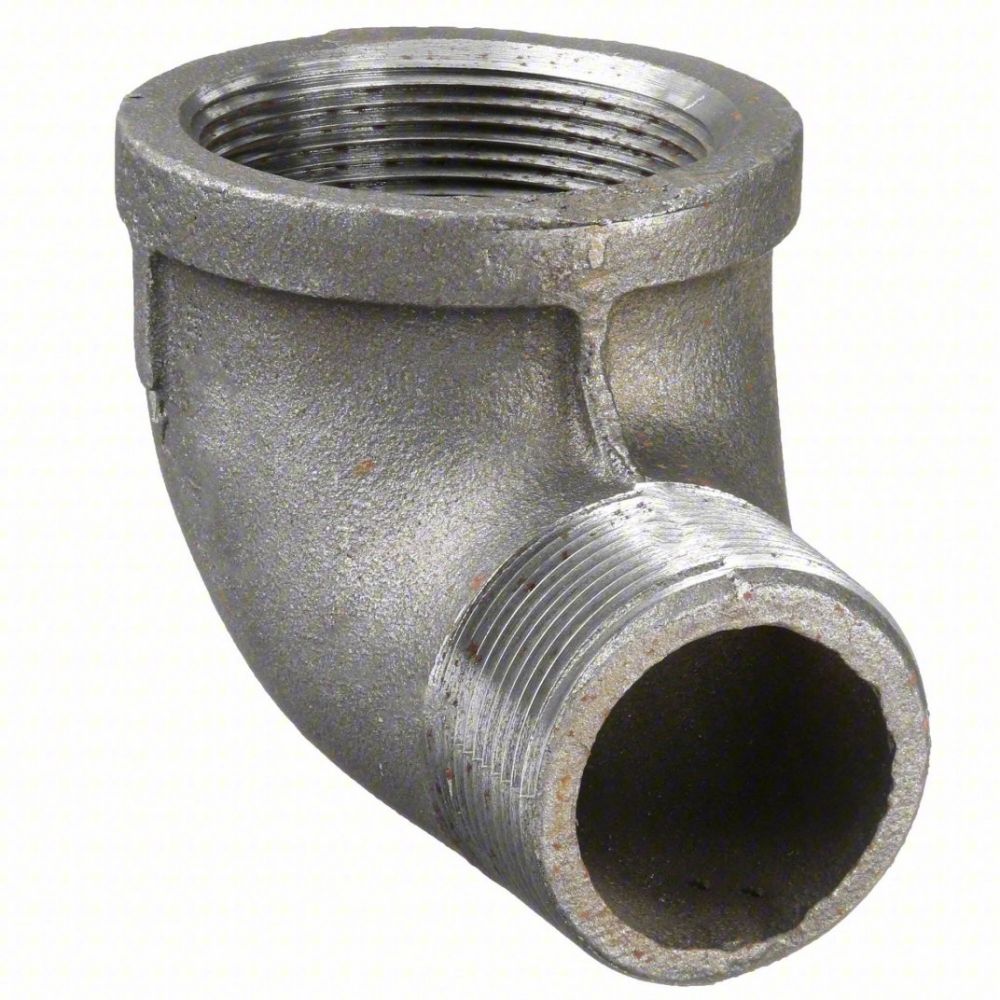
Choosing the Right Partner: Manufacturer Comparison and Custom Solutions
Selecting a reliable manufacturer for pipe fittings, particularly specialized components like the 1 1/2 galvanized union, is a strategic decision that impacts project success, operational longevity, and overall cost of ownership. The market offers a wide array of options, and discerning buyers must look beyond initial price to evaluate the total value proposition. Key differentiators among manufacturers include adherence to international quality standards (e.g., ISO 9001, CE, UL), a proven track record of product performance, extensive R&D capabilities, and responsive customer support. A manufacturer's ability to provide comprehensive technical data, material certifications, and independent test reports speaks volumes about their commitment to quality and transparency. Furthermore, leading manufacturers often offer robust customization capabilities. For projects with unique requirements – whether non-standard sizes, specific pressure ratings, or specialized coating needs beyond standard galvanization – a manufacturer that can provide tailored solutions is invaluable. This might involve producing a modified 1 1/2 galvanized union with enhanced sealing materials for specific chemical resistance or with unique threading specifications to integrate with legacy systems. The long-term service offered, including after-sales support, technical consultations, and reliable inventory management, significantly contributes to reducing operational risks and ensuring continuous system functionality. The best partners are those who not only supply high-quality products but also act as technical consultants, helping clients navigate complex piping challenges and optimize system design for peak performance and cost-effectiveness. Evaluating a manufacturer also involves assessing their global supply chain resilience and their capacity to meet demanding delivery schedules, especially for large-scale industrial projects where timely material availability is critical to staying on budget and on schedule.
Comparative Analysis of Common Pipe Fittings
| Fitting Type | Primary Material | Corrosion Resistance | Connection Type | Maintenance & Disassembly | Typical Applications |
|---|---|---|---|---|---|
| 1 1/2 Galvanized Union | Malleable Iron (Hot-Dip Galvanized) | Excellent | Threaded (Disconnectable) | Easy & Reusable | Water, Gas, Oil (Corrosive/Outdoor) |
| 1 1/4 Black Iron Coupling | Black Iron | Poor (prone to rust) | Threaded (Permanent Join) | Difficult (requires cutting) | Dry Gas, Fire Sprinkler Systems (Indoor) |
| 1 1/4 Black Iron Union | Black Iron | Poor (prone to rust) | Threaded (Disconnectable) | Easy & Reusable | Dry Gas, Steam (Indoor, Non-Corrosive) |
| Stainless Steel Flange | Stainless Steel (304/316) | Superior (highly chemical resistant) | Bolted (Gasket Required) | Moderate (requires specialized tools) | Corrosive Chemicals, High Purity Systems |
Real-World Impact: Case Studies and Trust-Building Initiatives
Our commitment to delivering superior pipe fittings is best demonstrated through successful application cases and our unwavering dedication to client satisfaction. Consider a recent project for a large-scale agricultural irrigation system in a coastal region, where traditional fittings suffered rapid corrosion due to saline soil and high humidity, leading to frequent leaks and significant water loss. By implementing our premium 1 1/2 galvanized union and other galvanized components throughout the network, the client reported a dramatic reduction in maintenance requirements and an estimated 15% improvement in water delivery efficiency within the first year. The easy installation of the unions significantly cut down the initial labor costs, and their robust corrosion resistance ensured consistent performance even under challenging environmental conditions. This success story underscores the long-term value provided by our durable fittings. Our client testimonials consistently highlight not only the quality of our products but also the responsiveness and technical expertise of our support team. We understand that in critical infrastructure projects, reliability is non-negotiable. To further bolster confidence, our products are rigorously tested and certified to international standards such as ISO and ASTM, providing objective proof of performance. We maintain comprehensive documentation for material traceability, manufacturing processes, and quality control checkpoints, ensuring complete transparency for our partners. Our long-standing relationships with industry leaders, many spanning over a decade, further reflect our reliability and authoritative standing within the global fittings market. This sustained partnership is a testament to our continuous investment in product innovation and our unwavering focus on delivering solutions that meet and exceed the most demanding industry requirements.
Ensuring Trust: FAQ, Delivery, and Customer Support
Building and maintaining trust with our B2B partners is at the core of our operations. We provide comprehensive support throughout the entire project lifecycle, from initial inquiry to post-installation assistance. Our commitment to trustworthiness is reflected in transparent processes, clear communication, and robust policies. We maintain a strong inventory of standard fittings, including the 1 1/2 galvanized union, to ensure prompt delivery. For customized orders or large project volumes, we provide detailed production timelines and consistently update clients on manufacturing and shipping progress, ensuring projects stay on schedule. Typical lead times for standard products range from 7-14 business days, while custom orders may vary based on complexity and volume. All our products are backed by a comprehensive warranty, guaranteeing against manufacturing defects and ensuring compliance with stated specifications for a defined period, typically 1 to 3 years from the date of purchase, underlining our confidence in product durability and performance. Our dedicated customer support team is readily available through multiple channels—phone, email, and online portal—to address technical inquiries, provide product selection guidance, process orders, and assist with any post-sales support. We also offer detailed product documentation, installation guides, and maintenance recommendations to empower our clients with the knowledge needed for optimal product utilization and longevity. This proactive approach to customer service minimizes potential issues, enhances operational efficiency, and solidifies our position as a dependable and preferred supplier in the industrial fittings sector. We believe that a reliable product is only half the equation; exceptional service completes the value proposition, ensuring peace of mind for our clients.
Frequently Asked Questions (FAQ)
- Q: What is the primary advantage of a hot-dip galvanized union over a black iron union?
A: The hot-dip galvanized coating provides superior corrosion resistance by creating a protective zinc layer that acts as a sacrificial anode, significantly extending the fitting's lifespan, especially in outdoor or humid environments where black iron fittings would quickly rust. - Q: Can a 1 1/2 galvanized union be used for gas lines?
A: Yes, galvanized unions are suitable for gas lines, provided they meet local codes and standards for gas installations and are properly sealed with an approved thread sealant or gasket. Always consult local regulations and certified professionals. - Q: How do you ensure the threads on your unions are compatible with standard pipes?
A: We adhere strictly to international threading standards such as NPT (ASME B1.20.1) and BSP (ISO 7/1, ISO 228), utilizing precision CNC machining and rigorous gauging processes to ensure perfect fit and seal with corresponding pipe threads. - Q: What maintenance is required for galvanized unions?
A: Minimal maintenance is typically required. Regular visual inspection for any signs of damage or leaks is recommended. The corrosion-resistant zinc coating inherently protects the fitting, reducing the need for frequent treatment. If disassembled, the seating surfaces should be cleaned, and the thread sealant or gasket may need replacement. - Q: What is your typical delivery time for a large order of 1 1/2 galvanized unions?
A: Delivery times vary based on order volume and current inventory. For large orders, we provide a detailed production schedule, but generally, lead times range from 3-6 weeks, with expedited options available for urgent requirements. Please contact our sales team for precise timelines.
Conclusion: The Enduring Value of High-Performance Unions
The 1 1/2 galvanized union, along with its related counterparts, embodies a critical intersection of material science, precision engineering, and practical functionality in industrial piping. Its superior corrosion resistance, high mechanical strength, and inherent design for ease of installation and disassembly position it as an indispensable component for durable and adaptable fluid conveyance systems. From the rigorous selection of raw materials and advanced casting techniques to the meticulous hot-dip galvanization and stringent quality control, every step in its manufacturing process is geared towards delivering a product that not only meets but exceeds demanding industry standards. The widespread application across petrochemical, water treatment, HVAC, and general industrial sectors underscores its versatility and reliability in diverse operating environments. As industries continue to seek solutions that enhance operational efficiency, reduce maintenance overheads, and ensure long-term system integrity, the strategic selection of high-quality galvanized unions becomes paramount. Partnering with a manufacturer committed to excellence, innovation, and comprehensive customer support ensures access to not just a product, but a complete solution that contributes significantly to the safety, efficiency, and sustainability of industrial infrastructure globally. Investing in robust and certified fittings like the 1 1/2 galvanized union is an investment in the longevity and optimal performance of critical piping systems, yielding substantial returns in reliability and peace of mind.
References
- ASTM A197/A197M-00(2017)e1, Standard Specification for Cupola Malleable Iron.
- ASTM A153/A153M-09(2015), Standard Specification for Zinc Coating (Hot-Dip) on Iron and Steel Hardware.
- ASME B1.20.1-2013, Pipe Threads, General Purpose (Inch).
- ISO 7-1:1994, Pipe threads where pressure-tight joints are made on the threads — Part 1: Dimensions, tolerances and designation.
- ISO 9001:2015, Quality management systems — Requirements.
Post time: Aug-18-2025


